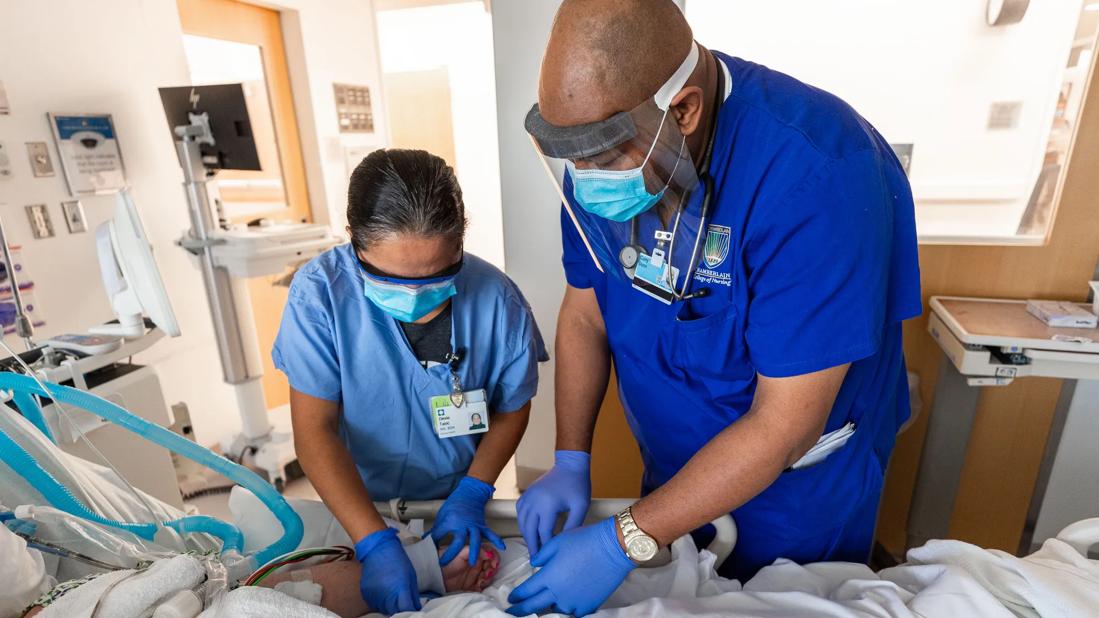Treatments could help patients suffer less, recover faster

Interferon, used alone or in combination with other antivirals, has the potential to significantly reduce the duration and severity of COVID-19, research suggests, but further investigation is needed to identify the types of interferon to be used and the methods of administration to yield safe and effective outcomes.
Advertisement
Cleveland Clinic is a non-profit academic medical center. Advertising on our site helps support our mission. We do not endorse non-Cleveland Clinic products or services. Policy
These conclusions were published in a review in Cleveland Clinic Journal of Medicine’s COVID-19 Curbside Consult series. “Interferon therapy for COVID-19 and emerging infections: prospects and concerns” was published by Leonard H. Calabrese, DO; Tiphaine Lenfant, MD, and Cassandra Calabrese, DO.
Well established in treatment of viral hepatitis, some cancers, and in multiple sclerosis, interferon is among a number of immunomodulating agents being studied for treatment of SARS-CoV-2 infection.
The review outlines functions of the three families of interferons — Type I, II and III — and elucidates how beta coronaviruses, including SARS-CoV and SARS-CoV-2, use molecular anti-interferon defenses to thwart innate immunity during the early stages of infection.
The authors note that research on COVID-19 therapeutics primarily has been focused on two fronts: mitigating early progression of the virus and treating cytokine-mediated inflammation, which occurs in a small percentage of cases, leading to severe illness and sometimes death. The Cleveland Clinic review focuses on what the authors describe as a third front of treatment research: the use of interferons to enhance and expedite viral clearance.
Type I and III interferons are activated by pathogen recognition receptors interacting with viral elements — part of a complex system of defenses developed over 450 million years. Studies indicate that COVID-19’s interferon counter-defense systems contribute to morbidity and mortality, and suggest a need for strategies to deliver interferon therapeutically. However, because interferon also can contribute to inflammation and tissue damage, careful consideration must be given to the types of interferon to be used as well as the timing and method of administration.
Advertisement
The authors’ Table 2 offers a helpful overview of clinical trials involving Type I and III interferons in COVID-19.
Research noted in the review included a study of 14-day regimens of lopinavir-ritonavir, ribavirin, and 3 doses of interferon beta-1b (8 million IU) on alternate days (n = 86) or 14-day regimens of lopinavir-ritonavir (n = 41). Interferon recipients on average received negative nasopharyngeal swab within 7 days compared to 12 days for the control group.
In a study in Iran, 42 patients who received subcutaneous interferon beta 1a along with the national drug regimen (hydroxychloroquine plus lopinavir-ritonavir or atazanavir-ritonavir) experienced a higher discharge rate by day 14 than the control group, which received the national regimen alone (66.7% vs 43.6%).The interferon group also had a lower mortality rate at 28 days (19% vs 43.6%).
A nonrandomized and non-peer-reviewed study in China assessed nebulized interferon alfa-2b, used alone or in combination with antivirals. Interferon recipients experienced reduced inflammation and a reduction in time to viral clearance in the upper respiratory tract compared to those who received only antivirals. The authors add, however, that the interferon recipients were younger and had fewer comorbidities than those who received the antiviral medication.
The authors conclude that current research points to promise for the use of interferon therapy for COVID-19, but randomized controlled clinical trials are needed.
The full review (with references) is freely available here.
Advertisement
Advertisement
Advertisement

Patients report improved sense of smell and taste

Clinicians who are accustomed to uncertainty can do well by patients

Unique skin changes can occur after infection or vaccine

Cleveland Clinic analysis suggests that obtaining care for the virus might reveal a previously undiagnosed condition

As the pandemic evolves, rheumatologists must continue to be mindful of most vulnerable patients

Early results suggest positive outcomes from COVID-19 PrEP treatment

Could the virus have caused the condition or triggered previously undiagnosed disease?

Five categories of cutaneous abnormalities are associated with COVID-19